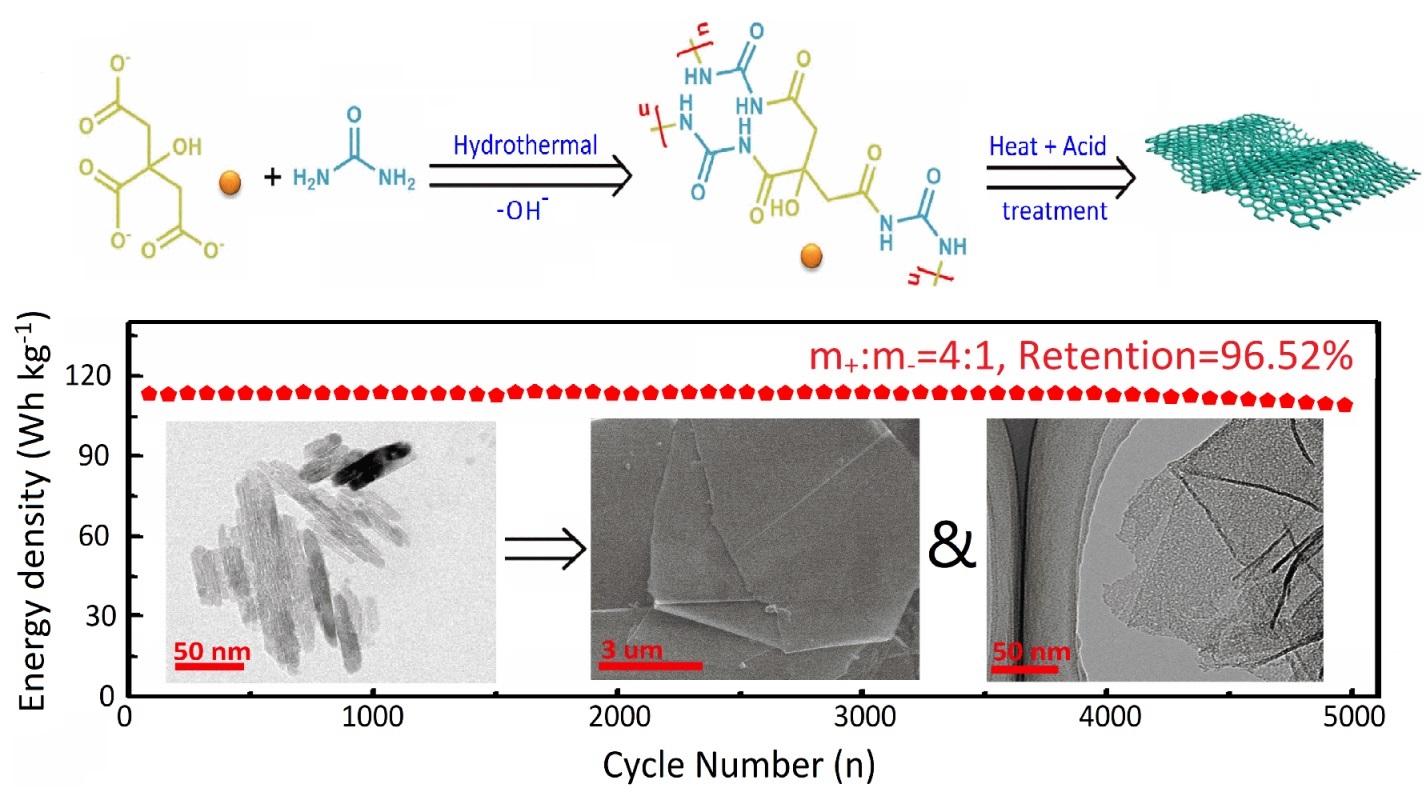李广超博士论文“Defective synergy of 2D graphitic carbon nanosheets promotes lithium-ion capacitors performance”被Energy Storage Materials接收发表
发布时间:2020-04-25
点击次数:
2D carbon materials show extraordinarily promising prospects in energy storage systems. To improve the performance of lithium-ion capacitors (LICs), it is urgently necessary for addressing the sluggish kinetics behavior of battery-type carbon negative electrode. Herein, novel 2D defective high-graphitic carbon nanosheets (GNS), which is derived from in-situ catalytic graphitization of 1D nanorods precursor, are presented and employed as negative electrode materials in LICs. The effects of defects contained in the as-prepared samples are further explored by the First-principle calculations, revealing that carbonylation and N-doping (particularly pyridine N) manifest synergistic effect on improving the electronic conductivity and regulating the microstructure. The high reversible capacity accompanied with large plateau capacity and superior rate capability in the half-cell test implies that GNS can be a promised candidate as negative electrode for LICs. Excitingly, the fabricated LICs exhibit high energy density of 112 Wh kg−1 and excellent power density of 19,600 W kg−1, together with outstanding energy density retention of 96.5% after 5000 cycles at 5 A g−1. The defects-controlled in-situ catalytic strategy for preparing GNS may provide a brand-new way for materials design for energy storage.

